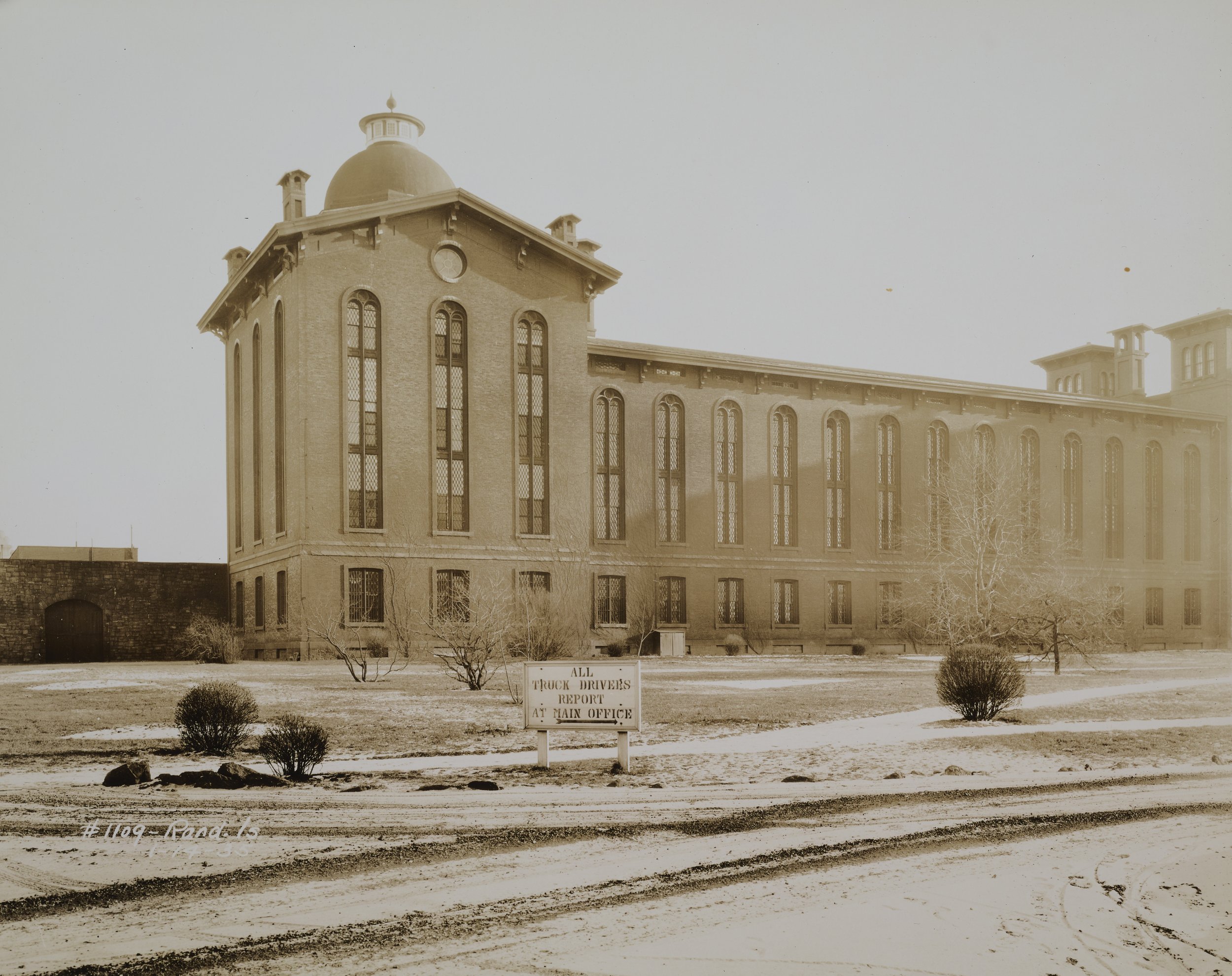Randall’s & Wards Islands
Before the construction of the bridge, Randall’s and Wards Islands were home to several social welfare institutions. These included the House of Refuge (the first juvenile reformatory in the United States), the Verplanck State Emigrant Hospital (once the largest hospital complex in the United States), and a Potter’s Field. The original bridge proposals would have connected the boroughs and made these institutions “more easy of access,” according to DPS.
The New York House of Refuge reformatory on Randall’s Island. January 14, 1935. Photographer unknown. Courtesy of MTA Bridges and Tunnels Special Archive.
In 1930, when Moses chaired the Metropolitan Conference of Parks, he suggested setting aside both Randall’s and Wards Islands as public park land. The proposal failed but the new bridge and creation of the Triborough Bridge Authority (TBA) gave Moses a second chance.
In 1937, he was both Parks Commissioner and Chairman of the TBTA, which led to the development of substantial parks on the island. He also pushed a pedestrian bridge connecting the park to Manhattan at 103rd Street, which was completed in 1951. The park has hosted picnickers, ball players, and artists, as well as events such as Olympic tryouts and the music festival, Governors Ball.
Pages from a brochure highlighting improvements made to Randall’s and Wards Islands, December 18, 1967. Triborough Bridge and Tunnel Authority and City of New York Department of Parks. Courtesy of MTA Bridges and Tunnels Special Archive.
The island continues to serve the City’s institutional needs. It is still home to facilities for the City and State including a wastewater treatment plant, the Fire Department of New York’s training academy, the Manhattan Psychiatric Center, and facilities for the Parks Department, the New York Police Department, and the Triborough Bridge and Tunnel Authority.

